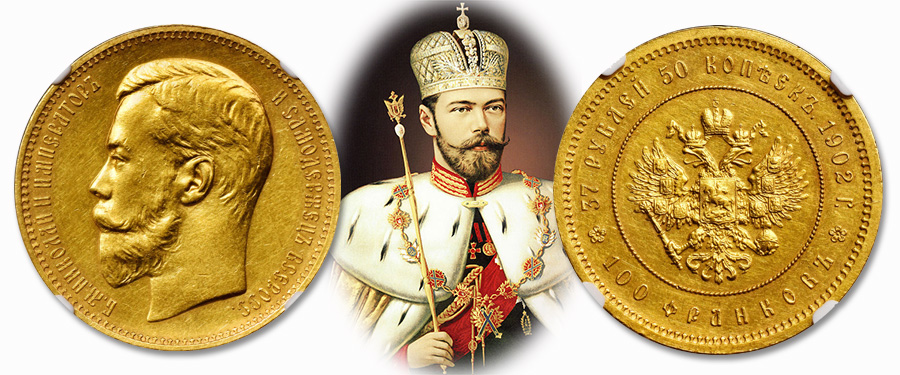
At the turn of the 20th century, pre-Revolution Russia was in a delicate place economically, rapidly industrializing yet falling behind Western Europe and Japan. To advance economic interests in the Tsardom, Russia was forced to appeal to external capital, which resulted in the fabled 37 Rubles and 50 Kopeks gold coin, long a source of fascination for collectors of Russian numismatics. With the largest denomination of any coin ever issued from the Russian Empire, along with its considerable size and weight, the type has great appeal for collectors of ultra rarities. Struck shortly after Russia went onto the international gold standard, the piece was heavily influenced by foreign banking interests.
Beginning in the late 18th century, and becoming more pronounced in the 19th century, Russia increasingly relied upon foreign banking consortiums to float Russian bonds. At first, funds were raised primarily in Amsterdam, then in Germany, and by the late 19th century, almost exclusively in France. The inclusion of "100 Francs" in the reverse legend – denoting the coin’s adherence to the Latin Monetary Union – clearly demonstrates the economic ties that Russia had with lenders in France. The Rothschild banking empire, based in Paris where many Russian bonds were placed, was a major underwriter of the Russian bond offering floated in early 1901 and may well be the source of the gold used for striking this issue. Containing the exact same gold content as a contemporary French 100 Francs and struck in the same 0.900 fine gold alloy, this 37 Rubles and 50 Kopeks piece would have been interchangeable at par in circulation. Bitkin describes the coin as a "donative," suggesting the coins were never intended to circulate, but instead were meant as gifts to gain influence while conducting official Russian state business. S.I. Chizhov states in Outline of Certain Types of Russian Coins in Past Two Centuries: "These coins not struck for circulation but selected for high dignitaries in the amount of 225 specimens. In all, 200 pieces were presented to His Majesty for personal gifts on special occasions. The remaining 25 specimens were turned over to H.I.H. Grand Duke George Mikhailovich."
The reliance upon foreign bonds, particularly French, led Imperial Russia and France to deeper economic and political cooperation. When Russia mobilized its army in 1914 to defend Serbia against Austria-Hungary, inflaming Germany into a declaration of war against Russia, France felt compelled to stand with their Russian allies and economic partners. The brutal Eastern Front of the First World War led to mass mutiny and ultimately revolution in 1917. The civil war that ensued ended with victory for the Bolsheviks, and the world’s first socialist state was declared in former Imperial Russia. Among the first acts of the new Soviet government was repudiation of all foreign debts, which had been the impetus for this coin in the first place. An unknown number were destroyed in the tumult of post 1902 Russia. Fewer than 20 have been certified by PCGS or NGC combined, and those that remain are highlights of Imperial Russian coinage.
This extremely rare issue is being offered lot 72181 of our October Collectors Choice Online Auction, now available for viewing and bidding at StacksBowers.com. We are always seeking coins, medals, and paper money for future auctions and are currently accepting submissions for our Official Auction of the January 2022 NYINC and our Spring 2022 Hong Kong auction. Additionally, we are accepting submissions for our Collectors Choice Online (CCO) auctions, the next of which will be in February 2022. If you would like to learn more about consigning, whether a singular item or an entire collection, please contact one of our consignment directors today and we will assist you in achieving the best possible return on your material.





